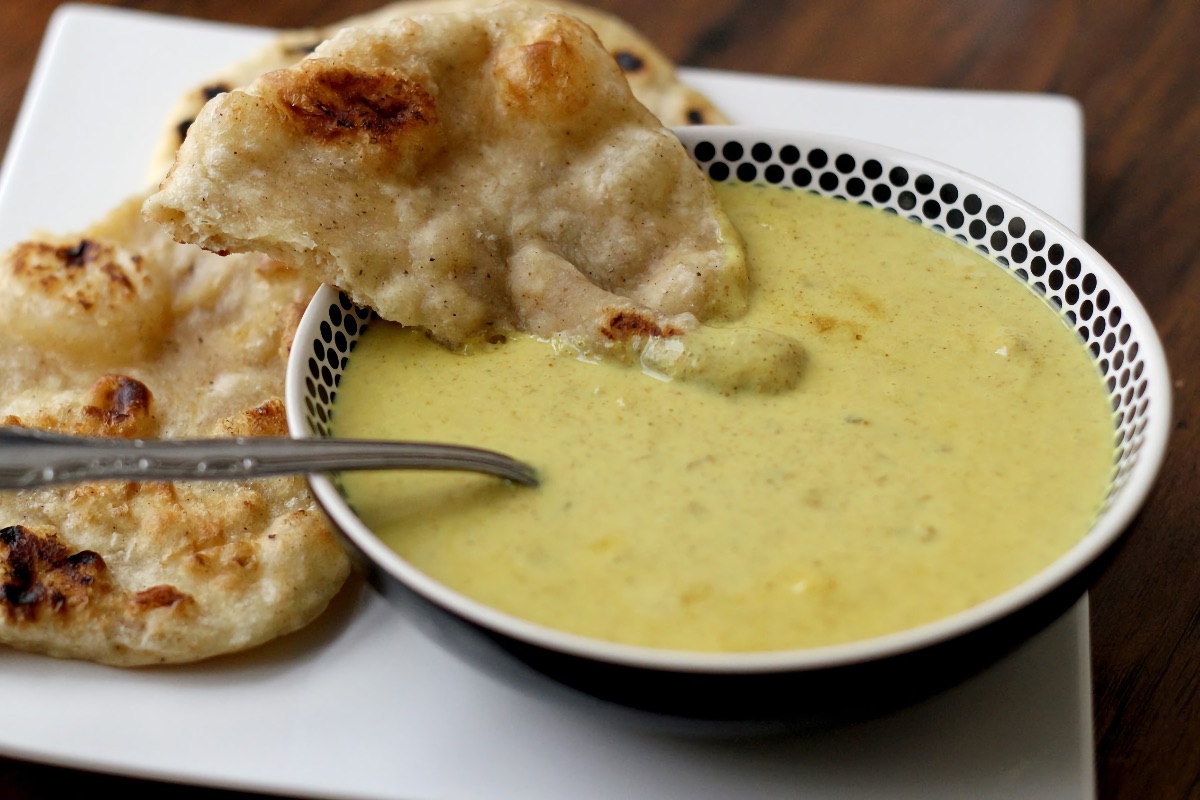I love the flavor and versatility of cultured dairy products like yogurt, sour cream, crème fraîche, labneh, and buttermilk. I eat (or drink) them plain, or with toppings or in smoothies for breakfast, and I make creamy custards, panna cotta, sherbet, and ice cream with them, too. I use them in cakes and pastries and breads for the flavor they add and the extra tenderness they impart.
Although these ingredients vary in fat content and consistency, all are somewhat tangy and this is probably the reason people often wonder if they are interchangeable in recipes.
The answer is: Usually you can make it work!
How you make it work depends on the recipe that you start with and the characteristics of the particular dairy ingredients you would like to substitute.
Here’s how I parse it:
1. I compare moisture content:
Sour cream, crème fraîche, and Greek yogurt are quite thick; buttermilk is very liquid; and regular yogurt is somewhere in between.
2. I compare fat content:
- Buttermilk (whole milk): 4% fat
- Regular whole-milk plain yogurt: 3%
- Regular low-fat plain yogurt: 1.5%
- Greek yogurt (whole milk): 5%
- Sour cream: 17%
- Labneh: 20%
- Crème fraîche: 40%
3. I compare tanginess/acidity:
Cultured dairy products on the lower end of the fat scale taste tangier than the richer ones. This is most likely because fat coats the tongue and softens the perception of acid (these products may not differ much in acidity in actuality).
That being said, now is a good time to remember that acidic ingredients in baked goods require an appropriate amount of baking soda to neutralize the acid, help leaven the cake, and encourage browning. If the acidity of the ingredients changes drastically, the amount of baking soda may need to be changed.
4. Finally, I consider whether my recipe is forgiving (or not):
Fussy recipes—think classic butter cake—can be sensitive to substitution. Significant changes to the amount of liquid, sugar, fat, or acidity in the ingredients may adversely affect texture, crumb, and browning.
Let’s say you want to use regular yogurt in a butter cake recipes that calls for sour cream. There are differences in fat, moisture, and tanginess between the two ingredients. Butter cakes are rich to begin with, so I don’t think the difference in fat or tanginess will be critical—in fact, these differences might be nice.
But I do think that the increase of moisture/decrease in solids could adversely affect texture and crumb of the cake and possibly cause it to sink in the center towards the end of baking. Greek yogurt would be a better choice than regular yogurt because its moisture content is more similar to that of sour cream; if all you have is regular yogurt, either reduce some of other liquid called for in the recipe (if there is any) or use less regular yogurt than the amount of sour cream called for. See where I am going here?
If a cake calls for buttermilk, you can probably substitute watered-down yogurt (yogurt with enough water stirred into it to resemble buttermilk) or possibly watered-down sour cream. I say "possibly" because the difference in acidity between buttermilk and watered-down sour cream might require a slight decrease in the amount of baking soda in the recipe, or better yet, the addition of a few drops of lemon juice to compensate.
Forgiving recipes—custards, panna cotta, sherbet, ice cream, and even soufflés (the Sour Cream Soufflés from Sinfully Easy Delicious Desserts can be made very successfully with Greek yogurt, labneh, quark, or mascarpone), not to mention toppings and shakes—are easier to play with.
I have varied my yogurt tart by using labneh or sour cream: Each variation produces a different result, but all are great. When I make these substitutions, I may or may not adjust sugar or other flavors in order to compensate for the tanginess of the ingredient, but I don’t worry about ruining the texture or causing structural failure unless I substitute a liquid ingredient for one that is thick and creamy: Common sense is still important after all!
But these kinds of recipes are easier—more intuitive— to experiment with.
This article was written by Alice Medrich from Food52 and was legally licensed through the NewsCred publisher network.








